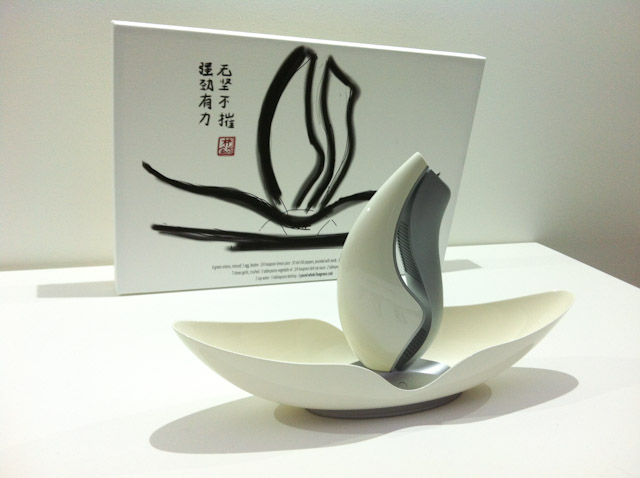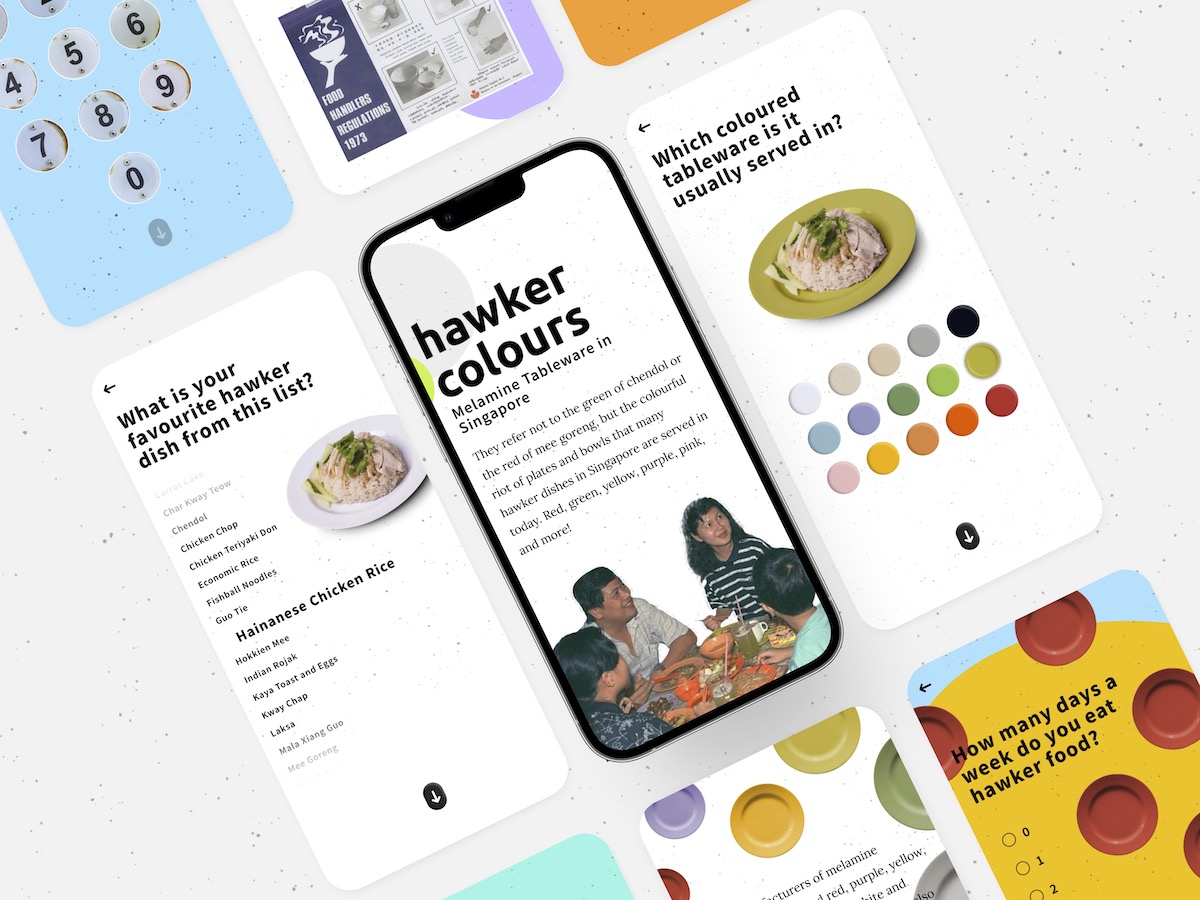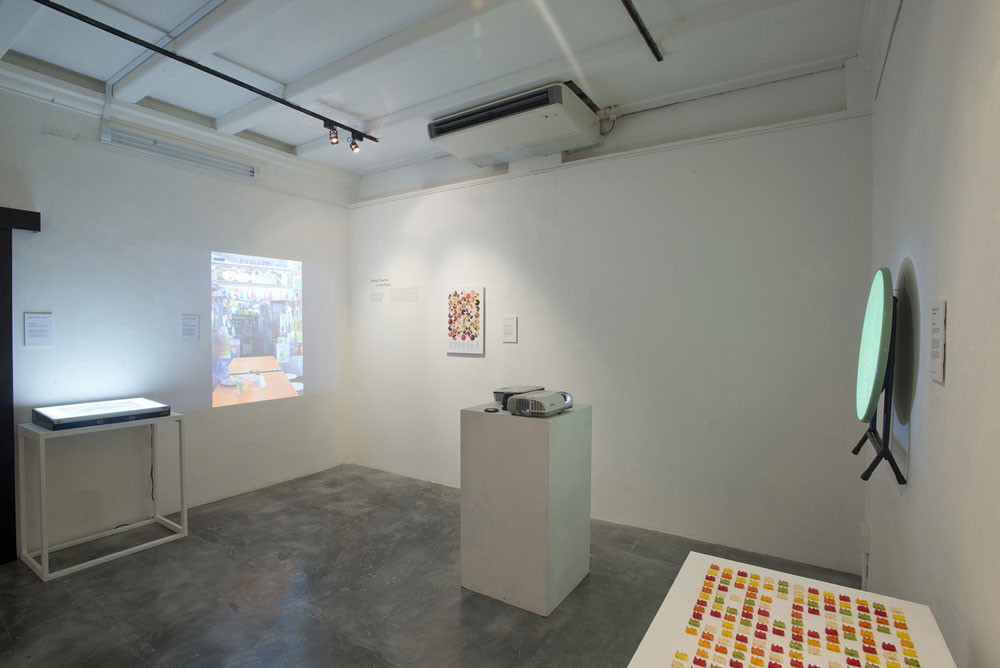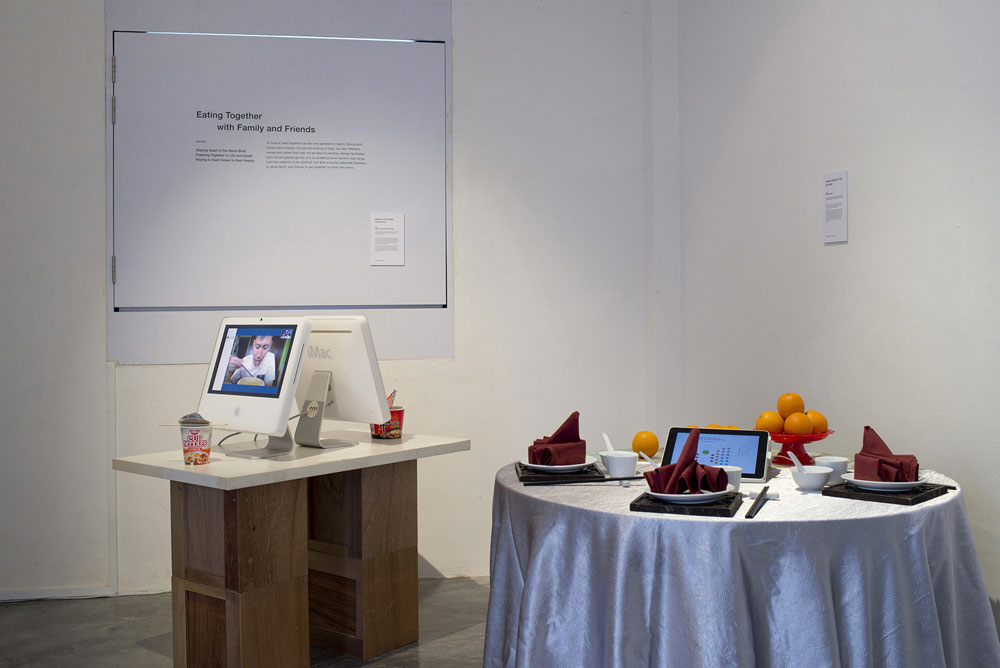Where else should Singapore designers look for inspiration but in the nation’s favourite past time of eating? This is the theme of “Makan Time! Tuck into Good Design”, the latest exhibition put up by the Little Thoughts Group, a collective that explores local culture through design.
The group of 18 designers, many who work in multinational companies including Dell and Hewlett Packard, each spent their own time and money to create and exhibit a design prototype inspired by Singapore’s food culture and heritage. The resulting collection is a variety of cutlery that highlight local practices, products that appropriate the imagery of everyday food, and objects that re-interpret how and what Singaporeans eat.




One of the most thoughtful pieces was Chan Wai Lim’s set of cutlery that embody traditional Chinese eating practices (right). To get around the problem of flipping a fish to eat the other side, which is seen as symbolic of a boat being capsized or simply bad luck, Wai Lim created a stand that holds it such that one can eat it from both sides at the same time (background). Another design by the recent winner of the President’s Design Award 2012 for her work on a Dell computer, illustrates the myth that one must finish every morsel of their food on their plate lest their future partner turns out ugly by putting a face at the bottom of a bowl.
“Makan Time” is the group’s third initiative to come up with Singapore design products since they first got together in 2009. While their first exhibition was inspired by their personal stories, they followed up in 2010 with a design collection based on their memories of Singapore. This current exhibition, after a two year hiatus, is on at the National Museum of Singapore until 27 January.
The marriage of Singapore’s rich food culture with its design scene has been one recurring trend in recent years. One of the earliest compilations was “Shiok! A Gastronomy of Singapore Design” in 2010, which put together the creations of several designers to present the country’s food culture at the inaugural Asia Design Conference organised by the centre of creative communication (CCC), in Shizuoka City, Japan. For years now, there have also been groups such as Triggerhappy, FARM and wheniwasfour that have designed various products related to Singapore’s food culture.
Like the work by the Little Thoughts Group over the years, “Makan Time” is distinct for a functional collection that probably reflects the industrial design backgrounds of its creators. This is unlike other existing food-inspired designs in Singapore that are generally more whimsical, such as re-approprating familiar food items to turn into objects of other uses.
However, “Makan Time” does reflect the increasing use of narratives to define what is Singapore design, instead of searching for it in a unique form. As I have outlined in “Got Singapore Design?” in The Design Society Journal No. 05, many of such works in recent times look like they can be from anywhere in the world, but seen in the eyes of those familiar with Singapore culture, they take on a different meaning altogether.
Finally, if you are keen to hear from the designers themselves, do check out their forum this weekend, 19 January!







